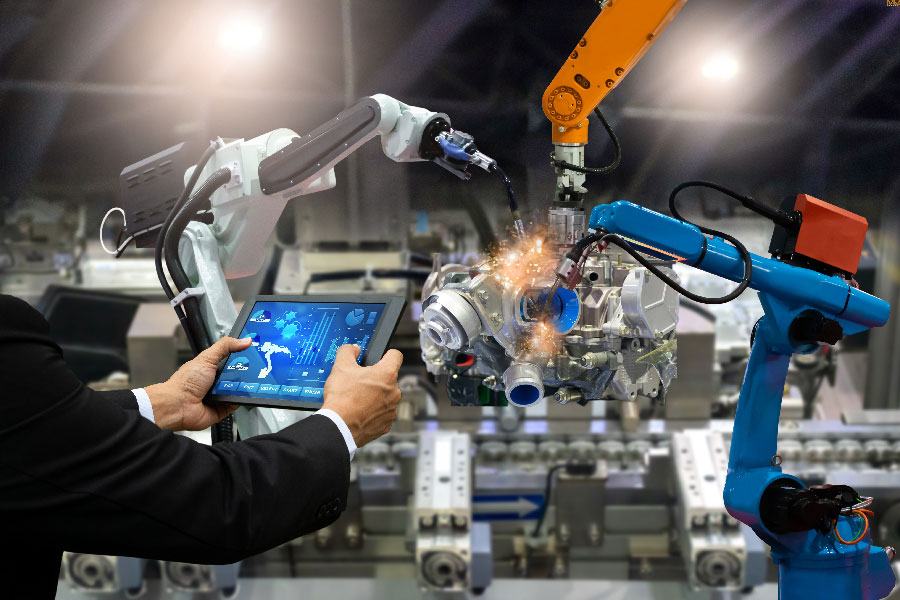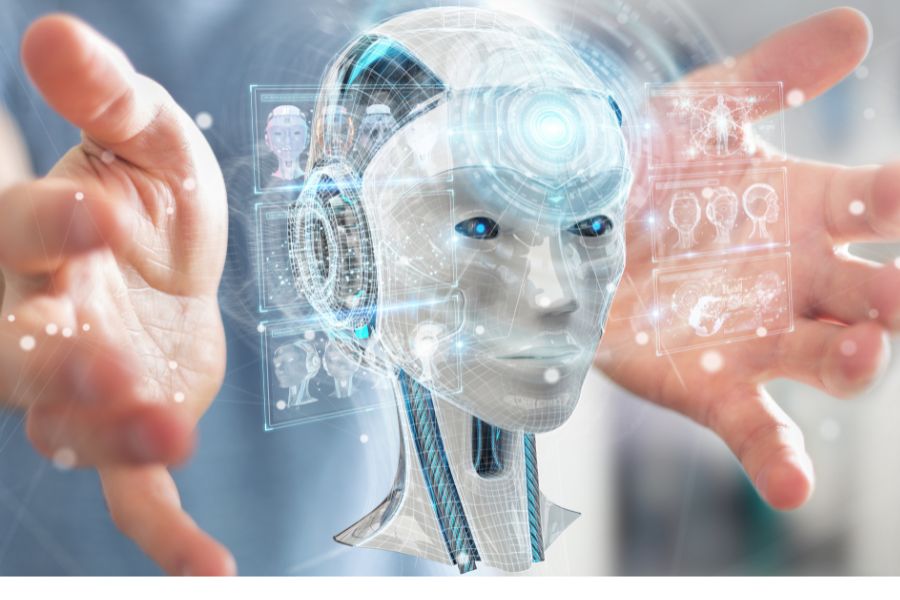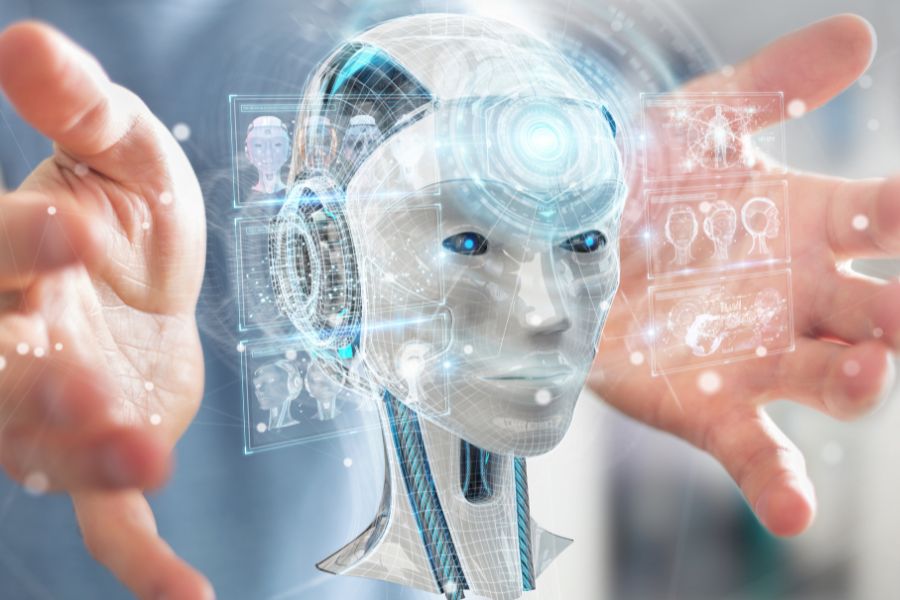Digital manufacturing: Key to make India world’s next factory
- NThe onset of coronavirus set the stage for companies around the world to realize the need to not put all their eggs in one basket and diversify their supply chains.
- This development augers well for India since foreign investment would augment the GDP, churn employment in the country and increase foreign wealth.
- For this vision to materialize, the country needs to assume greater self-control over its national value chain by embracing a shift towards digital manufacturing.
- From manufacturing to distribution, this entails a complete overhaul of the production line to save time, reduce inventory, expedite process and gain the best out of this scenario.

Image credit : https://bit.ly/2DHAxcJ
The proliferation of COVID-19 is leading to the unprecedented crumbling of global supply chains resulting from mandated lockdowns across the global ecosystem. As assembly lines are forced to halt or curtail operations, manufacturers around the world realised that they can no longer depend upon price as the primary criterion to source components globally. In the meanwhile, the association of China with the germination of this contagion has led to simmering of international hostility towards China for the economic carnage caused by the virus. All these factors, coupled with the volatility of this situation, have expedited the shift in global trade relations.
Industry experts believe that once the world recovers from this massive jolt created by the pandemic, there will be a shift toward a more fragmented and protectionist global economy, with restrictions on trade, investment and technology transfers. As localization of production or reshoring takes place all over the globe, trade system is likely to become more regionally focused. Each major region – Asia, Europe and the US – will likely have its own set of suppliers mapped out for strategically important products. “Asian countries ex-China will stand to benefit from diversification away from China provided that these countries have sound economic fundamentals, reliable infrastructure, sufficient human capital stock, and low geopolitical and supply security risk,” notes Moody’s Investors Service.
Going digital!
This creates the perfect window of opportunity for India for emerge as one of the preferred centres for manufactured products vis-a-vis China for India has a lot to gain from it. Foreign investment would boost the GDP, generate employment in the country and increase foreign wealth. But this opportunity can be leveraged only if India embraces the Nehruvian approach of ‘core self-sufficiency,’ or what Prime Minister Modi calls as a truly ‘Atma Nirbhar Bharat’. For this vision to materialise, the country needs to assume greater self-control over its national value chain by enhancing domestic value addition in its manufacturing industry.
One way to turn this dream into reality is to harness digital channels to their fullest extent to become an economy of scale and hence, an ideal production choice for the world in the post-COVID scenario. According to Infosys, digitally mature companies have greater resilience during the pandemic, particularly in employee engagement and seamless supply chain operations. “Manufacturers that have moved critical applications to the cloud have been able to function more smoothly as their employees access what they need from their homes. Concerns about data security and performance have been either disproven or outweighed by the flexibility cloud applications provide. Enterprises that invested in advanced analytics make even better use of these capabilities,” it notes.
How to make manufacturing smart & digitally sound?
The move towards digital manufacturing will entail:
1. A digital factory floor –
According to the Ministry of Electronics and Information Technology (MeitY), manufacturing automation will become increasingly pervasive across businesses and sectors in the coming decades. Manufacturing automation will encompass the reorganisation of human work amid advances such as robotics, artificial intelligence, and machine learning. Nothing has made this more apparent than the current health exigency which will force manufacturers to plan their operations to improve productivity and performance management in real time. Coupling the IoT with advanced analytics can help to maximise the yield and manage assets, leading to an improvement in overall productivity by 7 to 11% by 2025.
A case in point is Indian global two-wheeler company, Bajaj Auto Limited, which is the first Indian company to implement use of collaborative robots in automotive assembly lines in 2010. Its Universal Robots offered numerous benefits such as diminishing the challenge of space constraint in a manufacturing facility by the use of ceiling-mounted cobots, reduced redundancy of work by completing repetitive movements that require precision standardisation and catered to multi-modelling adaptability. Consequently, productivity at Bajaj Auto has grown from 507 to 804 vehicles per person per year, 58.5% increase year-on-year, while costs have reduced by 30-40%.
2. A digitally smart workforce –
Imparting intelligent and innovative technologies to enhance cognitive reasoning and knowledge is a strategy to create a digitally smart workforce. Specialising in Intelligent Process Automation (IPA) services on an industrial scale, this workforce according to the Deloitte Global Human Capital Trends report from 2017, is rated as being very important. Be it in reception, HR or in the R&D department analysing data, digital colleagues, with greatly developed digital skill sets, will be ubiquitous in companies in a smart factory.
For example, IBM, a global company with over 400,000 people, is leading the transition to digital HR, by deploying Checkpoint, its performance management process. The new feedback process is radically increasing engagement, alignment and goal management. Within HR, IBM leveraged the company’s AI investments in Watson to pilot the use of CHIP (Cognitive Human Interface Personality), an intelligent chatbot (available through computer, text messages, and soon voice) that recognizes the 200 most frequently asked employee questions. These range from queries like “Tell me about my vacation benefits” or “Find me an expert in digital marketing.”
3. A digital distribution network –
Digitizing distribution through robotics, AI & IoT and effective use of data lowers costs for the whole economy. One of the fundamental requirements of a digital distribution network is an integrated data platform that can capture data on inventory and goods flow from vendors to manufacturers, then to wholesalers, and finally to retailers and consumers. Point-of-sale technologies such as bar-code scanners have been employed to facilitate the same.
For example, Hindustan Unilever embraces a microsegmentation approach at the customer level to manage demand and supply. This enables this FMCG brand to create market-based customised offerings at optimal supply chain cost; sustain higher service levels with greater complexity; and accelerate speed to market with quicker response times. Further, in cities like Mumbai, Delhi, Bangalore, and Chennai, it also uses real-time point-of-sale data to improve its sales and operations planning processes. It captures data using hand-held-terminal platform called Unify along with bar codes on products; deploys advanced statistical tools and models to generate a robust baseline number; and takes the help of a cloud-based data collaboration tool to make data easily available to planners. As a result of these initiatives, the brand enjoys benefits like reduction in its inventory and service improvement during the pilot.
To sum up, digital manufacturing has the potential to unlock huge productivity gains for the economy through performance benefits. These entail achieving greater throughput, superior quality, improved safety, reduced variability, less waste and higher customer satisfaction. Not only will it improve the ease of doing business for producers by cutting down on time and costs, it will also spur employment opportunities in the country & help India become a US$1 trillion digital economy by 2025.
To realise the potential of this vision, the country should have in place an affordable IoT infrastructure. At the same time, it should put in place platforms which increase the pool of graduates with the skills to operate IoT-enabled equipment and advanced analytic tools. Companies, too, need to invest in system-integration software to capture data from multiple systems so as to garner real time market intelligence. Lastly, the government should formulate policies which are resilient to data leaks, phishing attacks and privacy policies of clients.













Leave a comment